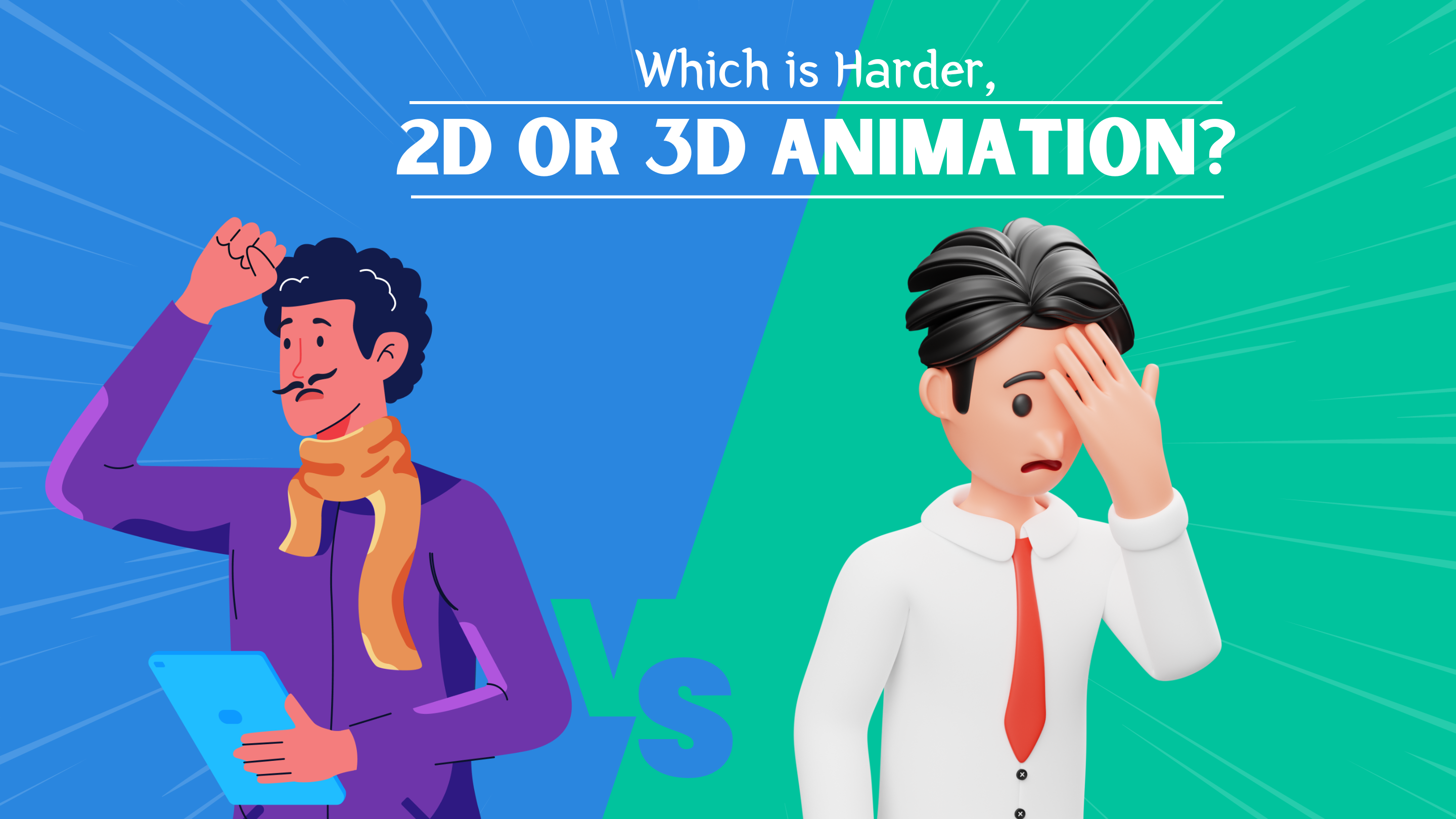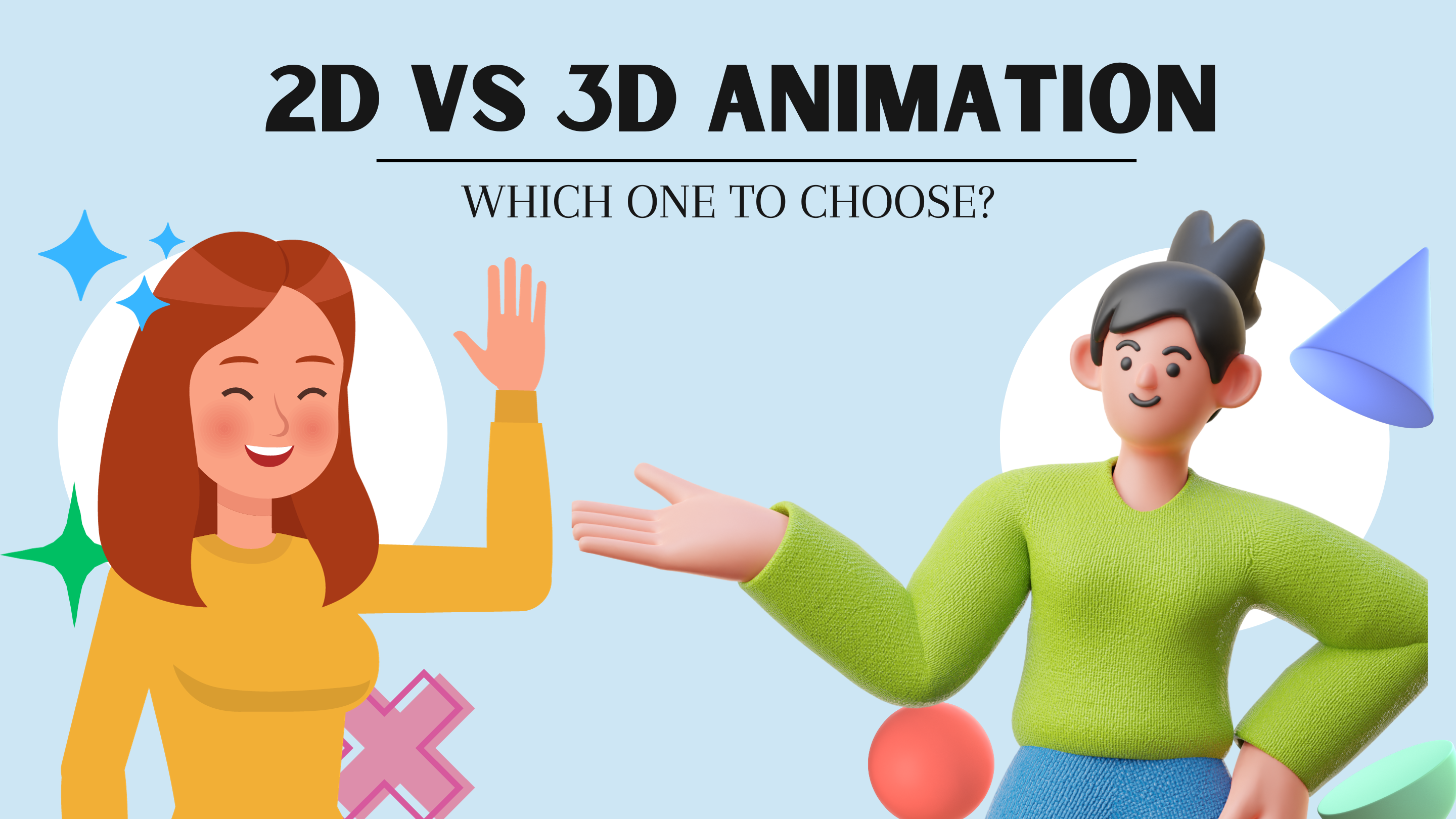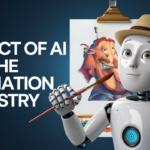Animation, an engaging form of visual storytelling, has become a dynamic and inclusive creative medium. In this blog, we will be talking about 2D vs 3d animation tracking their evolution within the industry, and exploring the distinct characteristics that define each dimension. A timeless art form, animation brings still images to life, providing a captivating experience for audiences around the world. Together, we will see the key differences and similarities between 2D vs 3d animation in this complex world of animation. We will also be looking into the various pros and cons of 2d animation vs 3d in this article.
What is 2D Animation and 3D Animation?
2D animation, which originates from visual art, involves creating movement in a two-dimensional plane. 2D animation dates back to the early days of cinema, where hand-drawn images were transmitted seamlessly to simulate movement. This traditional form has evolved to include modern digital techniques while still retaining its essence. Techniques such as celluloid animation, in which characters are drawn on transparent panels, and more modern digital methods contribute to the mesmerizing world of 2D animation.
On the other hand, 3D animation, a revolutionary advance in visual storytelling, introduces an additional dimension, bringing characters and scenes to life in three dimensions. An evolution of traditional 2D animation, 3D animation uses digital modeling, rigging, and complex software to create depth and realistic images. This dynamic medium has seen tremendous growth allowing animators to create complex characters and virtual environments. The evolution of 3D animation represents a fusion of artistic creativity and technological innovation, delivering immersive experiences in films, video games, and simulations.
Some of the 2D vs 3d animation examples like Disney’s classic “The Lion King” demonstrate the artistry and storytelling capabilities of 2D animation. Notable examples like Pixar’s “Toy Story” and James Cameron’s “Avatar” illustrate the incredible ability of 3D animation to bring fantastical worlds and characters to the forefront of modern storytelling.
Differences Between 2D and 3D Animation
If we talk about 3d vs 2d animation the differences go deep into the fundamentals of visual storytelling. In terms of visual depth and realism, 2D animation lies on a flat surface, using artistic techniques to evoke space. In contrast, 3D animation introduces an additional dimension, providing realistic depth through digital modeling, allowing characters and environments to exist in fully realized three-dimensional space. This is the main difference between 3d animation vs 2d animation.
The artistic interpretation creates a special contrast. 2D animation is more of a stylistic choice in character design and visual storytelling, emphasizing the creative interpretation of the animator. 3D animation, on the other hand, tends toward realism, using complex digital modeling and editing to achieve detailed, realistic characters and environments. 2D animation traditionally involves creating hand-drawn images, relying on the skillful sequencing of those images to convey movement. In contrast, 3D animation uses digital technology, using sophisticated modeling and editing software. This allows animators to manipulate three-dimensional digital assets and create movement.
If we talk about the 2d animation vs 3d animation cost, 2D animation typically has lower production costs due to simpler techniques, while 3D animation can be more expensive due to the advanced technology, digital modeling, and rigging required. The budget choice between the two depends on the complexity of the project, artistic preferences, and the level of visual sophistication desired.
Similarities Between 2D and 3D Animation
Despite the obvious differences, 2d vs 3d animation have fundamental things in common that tie them together as an art form. Both dimensions have the basic principle of sequential imaging, which relies on the continuous arrangement of images to create the illusion of movement. The essence of storytelling and character development remains essential in both fields, as animators create stories that resonate emotionally and intellectually with audiences.
Additionally, the skills needed to succeed in animation are interchangeable between 2D and 3D. A mastery of timing, an understanding of the principles of movement, and a keen sense of visual composition are common requirements. Whether creating two-dimensional characters or building three-dimensional worlds, animators rely on their creativity, technical knowledge, and storytelling ability to bring their creations to life.
Comparing the 2d vs 3d animation pros and cons reveals the artistic expression and production complexity. While 2D animation offers nostalgic charm and is cost-effective, 3D animation offers realism with higher production costs. The choice depends on project requirements, creative preferences, and desired visual impact for an immersive storytelling experience.
Which Is Harder, 2D or 3D Animation?

In 2D animation, artists explore the intricacies of hand-drawn frames, requiring a deep understanding of art fundamentals. The challenge lies in maintaining consistency and flow throughout the sequence. In contrast, 3D animation presents a combination of artistic and technical challenges. Animators must be proficient in digital modeling, rigging, and complex software, which requires mastery of both creative design and technical execution.
The three-dimensional animation adds complexity to spatial relationships and movements, contributing to cognitive difficulties. Ultimately, choosing between 2D and 3D animation often comes down to personal preference. Aspiring animators usually struggle in choosing 2d vs 3d animation which is easier.
Choosing between 2D and 3D animation easily depends on individual preferences and skills 2D animation, with its traditional hand-drawn approach, can be considered more accessible to those inclined toward artistic expression. On the other hand, 3D animation requires mastery of digital modeling and compositing, which makes it more complex. Although it is hard to say that 2d animation vs 3d animation is easier. The ease of learning ultimately depends on individual skills and the specific challenges the instructor finds most intuitive.
Should I Learn 2D or 3D Animation? Which Is Better?

Deciding between studying 2D or 3D animation is an important choice for aspiring animators, the decision depends on their creative aspirations, industry preferences, and the artistic path they take. For those who favor artistic expression and stylized visuals, 2D animation seems to be an ideal choice. This dimension allows animators to delve into the details of hand-drawn frames, emphasizing personal style and creative interpretation. Those attracted to realism, complex models, and dynamic environments may choose 3D animation. Industries such as cinema, games, and virtual simulations are increasingly embracing the immersive experiences offered by three-dimensional animation. Although there is a slight difference between the 2d vs 3d animation cost, you can choose your field according to your budget.
Why Is 3D Animation More Popular?

The ability to create realistic simulations and immersive experiences has made 3D animations more popular than 2D animations. In film and video games, 3D animation has become fundamental, allowing the development of vibrant and visually impressive stories that appeal to audiences. The demand for photorealistic images extends beyond entertainment, to industries such as architecture, medicine, and education. Its impact on advertising, virtual reality experiences, and product design further emphasizes its popularity. The 2d animation vs 3d animation saga continues as animators need to understand what skill set they wish to add.
Animation Resources for 2D and 3D Enthusiasts
For 2D animation enthusiasts, essential software includes Toon Boom Harmony, known for its versatility and user-friendly interface. Animation Mentor stands out as an online platform providing professional advice and resources, promoting the development of aspiring 2D animators through courses. For 3D animation, Autodesk Maya has emerged as a leading software choice, known for its powerful modeling and animation capabilities. Blender, a free and open-source option, offers powerful tools for 3D creation. CG Cookie provides an online community and learning platform, supporting 3D artists with valuable information and tutorials.
If I Want to Learn Both, Should I Learn 2D Animation or 3D Animation First?
Choosing between studying 2D or 3D animation depends largely on personal preferences, career goals, and desired skills. Starting with 2D animation allows aspiring animators to master basic artistic skills, focusing on hand-drawn frames, character design, and storytelling principles. This approach promotes a thorough understanding of animation principles before delving into the complexities of three-dimensional space. In contrast, starting with 3D animation will provide an overview of digital modeling, editing, and working in virtual environments, providing a comprehensive understanding of the technical aspects. For a well-rounded skill set, mastering both aspects is invaluable. Converting from 2D to 3D or vice versa improves flexibility, allowing animators to navigate different projects and industries.
Conclusion
Stating 2d vs 3d animation which is better will be a debate for years. From the artistic expression and storytelling appeal of 2D animation to the immersive realism and technological advancements of 3D animation, both dimensions offer unique avenues for creative expression. Aspiring animators are encouraged to delve into both aspects, recognizing the benefits that each brings to a well-rounded skill set. Whether drawn to the stylized charm of 2D or the immersive experiences designed in 3D, animators can find their creative niche by exploring both fields.




